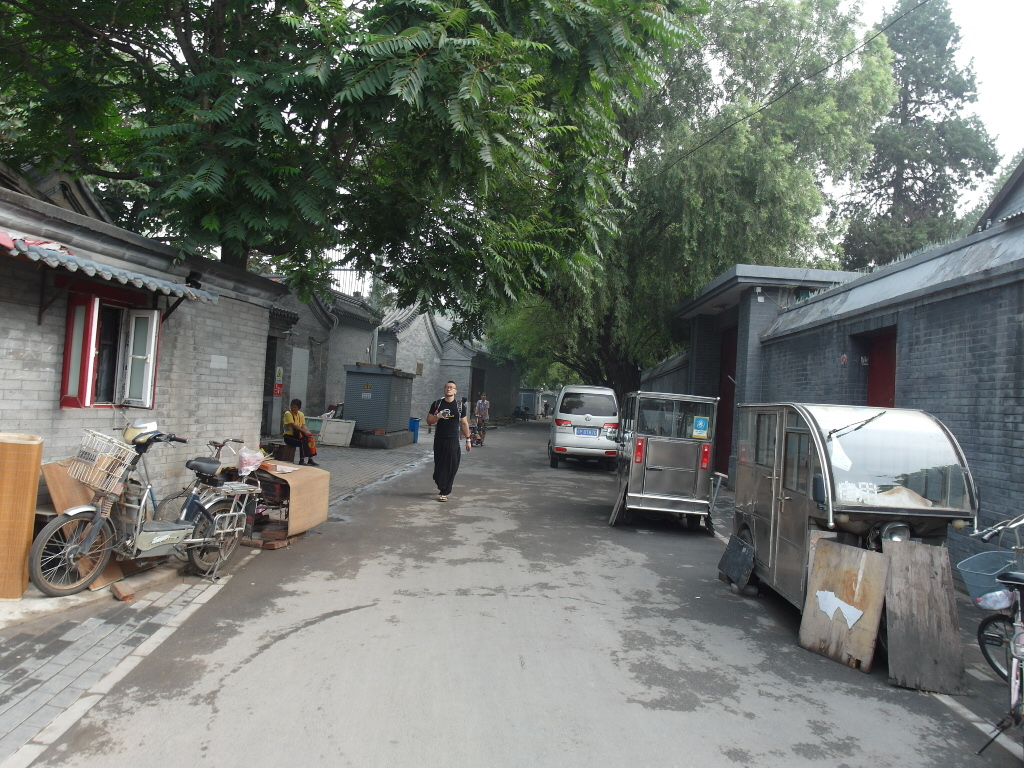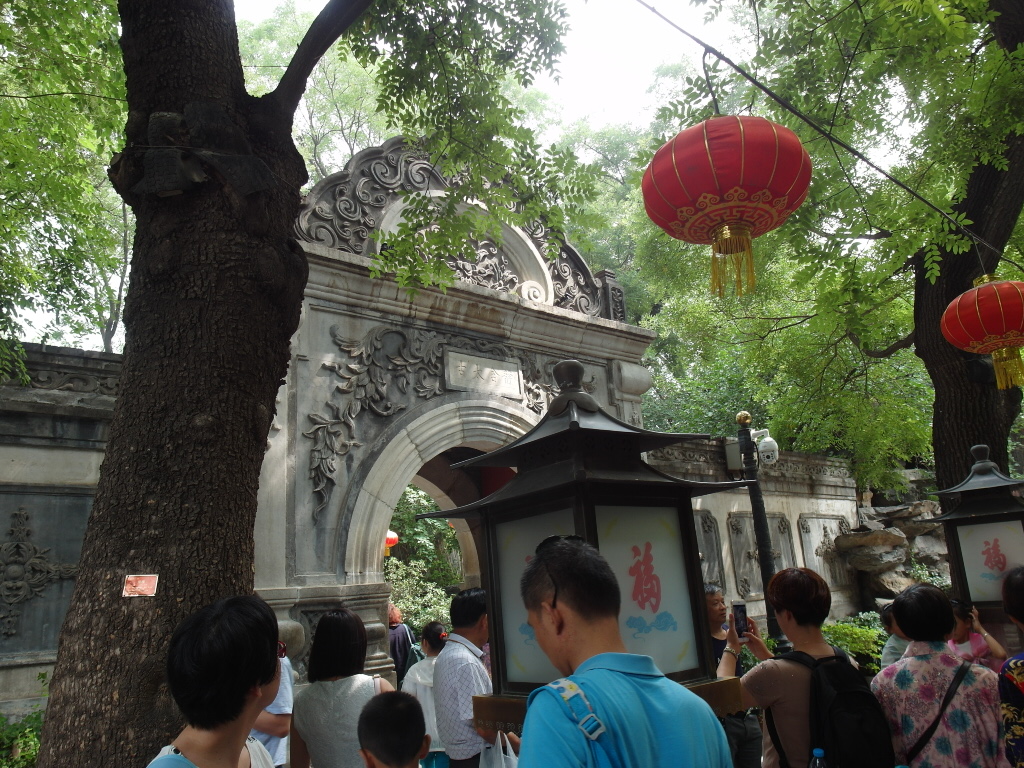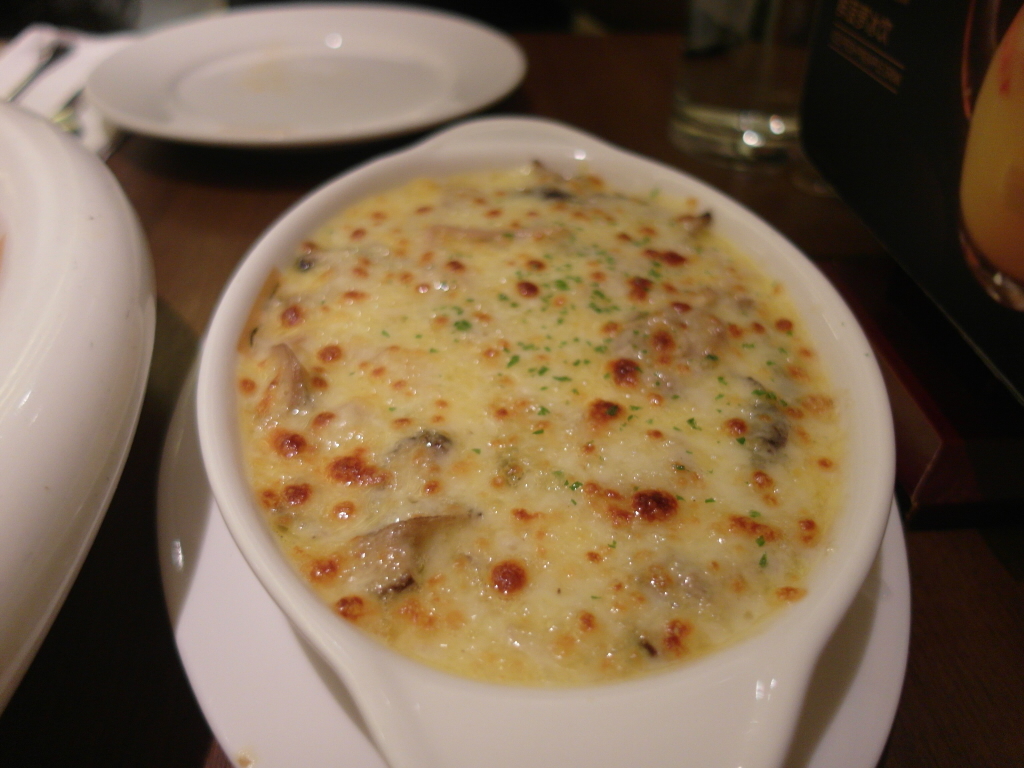Showing posts with label China. Show all posts
Showing posts with label China. Show all posts
Beijing Trip (Jun 2016) - Prince Gong Mansion
The last time I went to Prince Gong Mansion (恭王府), was a good 11 years ago when I did my internship with a private equity firm in Beijing. I feel old just saying that! It was one of my favourite tourist spots back then and still is today.
Different from other tourist spots in Beijing, Prince Gong Mansion is not the most easy to find. It is nestled inside a Hutong (a type of narrow meandering old Beijing street) and is located within a residential area.
It has an unassuming frontage and would be easy to miss if you don't look out for the signage.
Constructed in 1777, Prince Gong Mansion is the biggest and most well preserved Princely residence (accommodation of an imperial Prince) in Beijing. It occupies an area of around 60,000 square metres.
It was first constructed for He Shen, a prominent and corrupted official of Qing dynasty, under the Emperor Qianlong's reign. He was favoured by the Emperor at a young age and rose through the ranks rapidly - he rose 9 ranks over the course of 3 years. To put things in perspective, it would be from a Grassroots leader to a role of the Prime Minister of the nation within 3 years. When Emperor Qianlong passes away in 1799, his son, Emperor Jiaqing, accused He Shen of corruption and ordered for his execution. The property was then confiscated and passed onto Prince Gong, the 17th and youngest son of Emperor Qianlong, whom the mansion was named after.
There's a saying that says one Prince Gong Mansion, takes up half the history of Qing Dynasty. If you have no time for the Forbidden City, I would highly recommend dropping by Prince Gong Mansion. It is a much smaller space and less crowded (it took me around 2.5 hours to finish touring the place) and they provide free guided tours as well.
We were extremely lucky because one of the free guided tours was just starting as we stepped through the door. The lady with the loudspeaker is our guide.
Before the start of the tour, it is imperative to understand the backstory of the original resident of this place - He Shen.
And before we start on He Shen, it is important to understand the story of why he was so close to Emperor Qianlong. When the Emperor was 15 years old and was a crown prince, he played a prank on one of his father's concubine. He did so by creeping up behind her and covered her eyes with his hands while she was putting on makeup. Taken aback by the sudden action, she hit him. The news of this interaction spread swiftly in the harem. In order not to ruin his chances of being the next emperor, Qianlong's mother sentenced the concubine to death on 2 counts of crime - one being inappropriate behaviour with the crown prince, and two for hitting him. Guilty for being the sole cause of her death, Qianlong paid her a visit before the day of her execution.
The Manchus believed in Shamanism, a religious belief that the afterlife and reincarnation. Qianlong promised her that he would treat her well and compensate her if they get to meet again in her next life. Qianlong then bit his thumb and left a blood print behind her neck, in hope of identifying her should she gets reincarnated.
20 years later, Qianlong is now the emperor and meets the 20 year old He Shen for the first time. He Shen was at time, a lowly guard who's in charge of horses in the imperial stable. The emperor was very certain He Shen was a reincarnation of the late concubine because of 3 things - 1) he is exactly 20 years old (the concubine died 20 years ago), 2) his looks resembled that of the late concubine (He Shen was noted in historical records to be a beautiful looking man who's fair and has red lips) and 3) He Shen had a red birth mark at exactly where the emperor had left his thumb print! 

Long story short, He Shen rose swiftly through the ranks, in part due to Emperor Qianlong's favoritism and in part he is a brilliant man himself. Not only was he well versed in all the ancient teachings and poetry, he was multi-lingual as well (in Manchurian, Mandarin, Tibetan and Russian). As he got more and more powerful in the courts, he also became increasingly corrupted. When his property was being confiscated, the treasures and wealth he amassed was noted to be worth SGD360 billion in today's valuation. 360 billion! 
 So crazy.
So crazy.
Upon entering the main gate, you will be greeted by a long stretch of double storey building. Length of this building is exactly the length of the entire Mansion. It is also the only double storied building within the whole compound. From the front, these looks like very ordinary guestrooms but these are the rooms which He Shen had used to store all his treasures! He had made special code on each of the rooms, which only he knows which rooms store what kind of treasures. It is visible only if you go towards the back of the house. Notice that the shape of each window is different?
Prince Gong Mansion has a huge garden, almost twice the size of the Imperial Garden in the Forbidden City. He Shen has once made the statement that "Whatever the Emperor have, I have. And whatever the Emperor do not have, I have too". This was illustrated in the amount of treasures seized from his home and also the size of his garden, which implied his ability to utilize expensive land for grounds of leisure purpose.
The entrance of the garden is arch also known simply as the "Western Style Gate". It is made entirely out of white marble stone. In China's history, 2 of such gates were made and this one in Prince Gong Mansion is the last one standing. The other one belongs to Yuan Ming Yuan (Yuan Ming Garden) and was burned down by the 8-Alliance army.
Once you enter the gate, you will be greeted by a sea of greens and fake mountains.
Before the pathway opens up to the main garden area, you will be greeted by a stone fixture that resembles a woman holding a baby. This was a naturally formed stone that He Shen had installed at the entrance of the garden. In Chinese saying, there is a 送子观音 which signifies the gifting of a son from Guanyin. He Shen does not have a son and had this rock placed in his home for fengshui purposes. Strange as it may sound, he did eventually have 2 sons thereafter.
If you pay attend to all the carvings in the garden, you would have noticed there are many many carvings of bats (as seen in the picture below). In the Manchu belief, bats are creatures of luck because in Chinese, bats are called 蝙蝠 (Bian Fu), where the Fu sounds like 福 (prosperity). He Shen had carved 9,999 bats in this residence because 10,000 as a number is related to the Emperor (recall 万岁万岁万万岁!) and carving 9,999 bats signifies that he is only below the Emperor but above everyone else. So power hungry and so sneaky! 
Right in the middle of the garden is a small pond that is shaped like a 葫芦 or a gourd and surrounded by a type of tree that is known by the commoners as the money tree. It is called the money tree because it's leaves are shaped like ingots (currencies of the ancient times) and turns yellow in autumn. During that time, all the yellowed ingot-shaped leaves will drop into this pond, making it a wealth collection point for He Shen's house. This was verified in modern times by various Fengshui masters to be one of the rare houses in Beijing to have excellent Fengshui. Based on the amount of wealth he accumulates, you can't say they are too wrong!
There is something precious in the gardens - and I wasn't allowed to take a photo of it. It's the 福 word that was penned originally by Emperor Kangxi. Since I do not have a picture of it, I've Googled one:
If you are wondering why is something penned by Emperor Qianlong's grandfather doing in the house of He Shen, let me start with yet another story. Emperor Kangxi was a man known for his love of calligraphy, but he hardly put his imperial seal on any of his works - which makes this word all the more precious. When Emperor Kangxi was 19 years old, his beloved grandmother fell ill and none of the imperial doctors could put a finger to what she was down on. Worried for his grandmother's health, Emperor Kangxi decided to go on a vegetarian diet and spent time meditating in a temple to pray for her health. One night, after a strange dream in the temple, he woke up and penned this 福 word. To which, to his surprise, he realized this was an atypical 福 word that signified what humans have been pursuing all their lives. Let me break it down for you.
It is atypical because this word can be broken up into many words. The top right corner of the word is broken down to form the word 多 - which means plenty. Let's move on to just the left side of the 福 word. The entire left hand side of the word (including the dot) can be viewed as 才 (which refers to talent), and removing the dot is a 子 word (which refers to offspring). Moving on to the right side of the word, the entire right side is a 寿 word (which refers to longevity) and the bottom of the right word is a open ended 田 word (which refers to land, and it being open ended means endless land/wealth). Put them together, it forms the 福 word!
In other words, this word brings about 多才,多子,多寿,多田 and 多福 - talent, offsprings, longevity, land/wealth and prosperity - which is what humans aspire their whole lives to have. When Emperor Kangxi tried to recreate the word the days after, he couldn't and hence deemed this word special. Instead of putting an imperial seal at the bottom right corner (the usual for imperial seals), he placed it right at the top of the word, meaning the maximum prosperity (福已到顶). The word was then gifted to his grandmother who eventually was so touched by the gift she recovered and lived to a ripe old age of 75 years old (which is quite a feat in the olden days).
She believed that the word shouldn't die with her and she gifted it back to Emperor Kangxi who in turned gave it to his son, Emperor Yongzheng and then Emperor Qianlong. The reigns of these 3 emperors were known as the golden era of Qing dynasty and historians have also attributed it to the gifting of this atypical word. He Shen was the last to have "received" this word - he was never officially gifted it and it was believed he had it stolen from the Imperial archive. In order to retain the exact handwriting, He Shen had a stone carver carved on the paper directly onto the stone. The paper is then officially destroyed and only left this stone.
He Shen was once quoted to mention he wanted this word in his house to stabilize it (镇宅) and to bless his offspring. He sure got what he wanted. While many old Prince residences and buildings were destroyed during the Cultural Revolution, this property remained unharmed all through it. Despite his crimes, he was only sentenced to a self induced death by being provided a bale of white cloth. During a time where your entire family tree will be wiped out because of your crimes, his whole family was spared, including his wives (yes all 600 of them) and his children. Maybe you could call it luck, or maybe the word really brought him and his family luck. After the word was gone and not passed down, the start of the decline of Qing dynasty begun after Emperor Qianlong passed on.
The middle building in the compound is He Shen's bedroom and is a duplex. In those days, only the ultra rich gets to stay in a duplex and was previously called the 仙楼 (deity complex) which implies it's so luxurious it's meant only for the deities.
His bedroom complex was made entirely out of 金丝楠木 (Phoebe Zhennan), a type of wood that has a natural golden sheen. The other person who had built his bedroom out of this wood was the Emperor himself. This type of wood is not considered a national treasure and the market price of this wood went as high as almost US$15K per cubic square metre.
It's amazing how much of the Qing dynasty's history can be learned from one Prince Gong Mansion and that is why I highly recommend it for anyone who has only a short time in Beijing but wishes to visit at least one spot to get a taste of China's rich history.
That pretty much wraps up my Beijing trip back in June 2016. And it's August now. Took me so long to finish writing this!
Can't wait to plan more trips with the boy! 
Beijing Trip (Jun 2016) - Lama Temple (Yonghe Palace)
Straight after our tour of Forbidden City, we had a quite lunch and headed to Yonghe Palace (雍和宫), more commonly known as the Lama Temple. It is located in the Northeastern part of the Beijing city and is very easy to get to. Simply get onto the Subway Line and alight "Yonghe Gong" station, go via Exit C.
There are various shops along the way that sells incense and offerings for the temple. Do not purchase from them as the temple provide a complimentary set upon purchase of entrance tickets.
The Yonghe Palace is a tranquil place and a far cry from the hustle and bustle from the other tourist attractions we went to. It was definitely a refreshing experience and a much needed one.
The palace was built originally in the 16th century as the accommodation of Emperor Yongzheng when he was still a Prince. The building has the same red walls and yellow roof tiles as the Forbidden City, implying that this was once a dwelling of the Imperial Family. When Emperor Yongzheng ascended the throne, he converted his previous residence to a lamasery, and that continued till today.
Not many photos were taken here since it was on religious grounds. I liked that it was quiet and there were no loud tourists/visitors and I knew the boy would love this place because of his Buddhist beliefs.
We were famished by the time the day draw to a close. Besides the extremely rushed and light lunch, we virtually ate nothing else for the day. We ate 2 dinners to make up for it 
Next up would be my favourite place of the entire trip - Prince Gong Mansion!
Subscribe to:
Comments (Atom)


























































